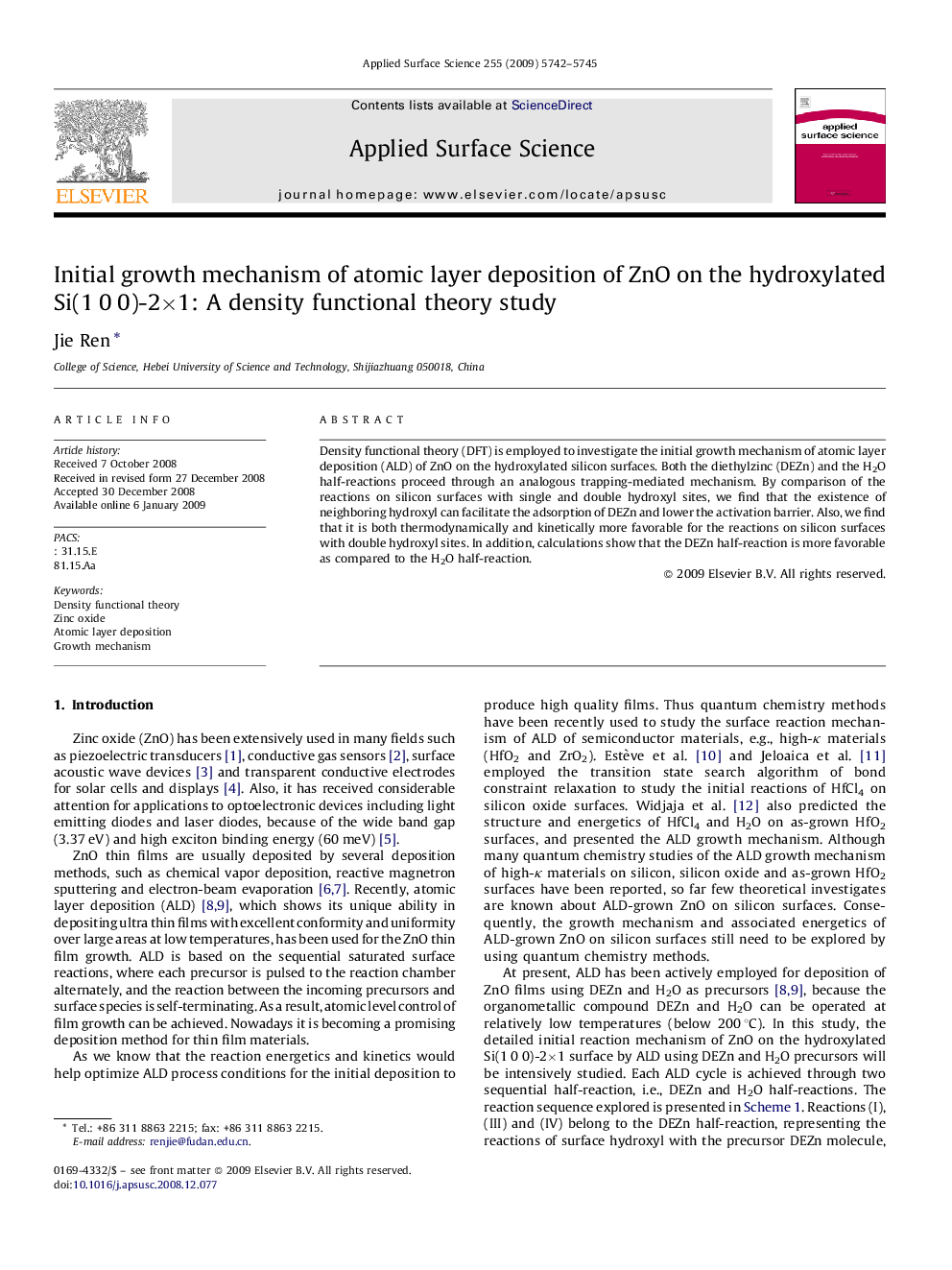| Article ID | Journal | Published Year | Pages | File Type |
|---|---|---|---|---|
| 5367268 | Applied Surface Science | 2009 | 4 Pages |
Abstract
Density functional theory (DFT) is employed to investigate the initial growth mechanism of atomic layer deposition (ALD) of ZnO on the hydroxylated silicon surfaces. Both the diethylzinc (DEZn) and the H2O half-reactions proceed through an analogous trapping-mediated mechanism. By comparison of the reactions on silicon surfaces with single and double hydroxyl sites, we find that the existence of neighboring hydroxyl can facilitate the adsorption of DEZn and lower the activation barrier. Also, we find that it is both thermodynamically and kinetically more favorable for the reactions on silicon surfaces with double hydroxyl sites. In addition, calculations show that the DEZn half-reaction is more favorable as compared to the H2O half-reaction.
Related Topics
Physical Sciences and Engineering
Chemistry
Physical and Theoretical Chemistry
Authors
Jie Ren,
